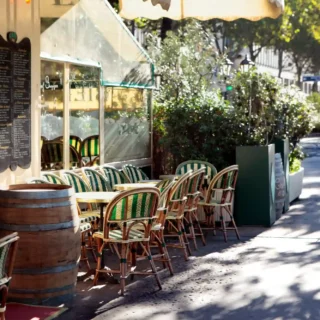Intramuros: The Walled City That Survived Empires

Few cities in the world have died and been reborn quite like Intramuros. This walled district in the heart of Manila is a living archive of what a third-world country endured at the hands of imperialists. If you want to experience a sneak peek into the Philippines’ colonial history, walking the cobble streets of Intramuros is the way to go.
From its establishment during the 300-year Spanish colonization to the brutal Japanese occupation, up until its demise during World War II, Intramuros echoes a story of destruction, rebirth, and inevitable progress.
Join me as we explore the historic site of Intramuros and discover how its survival continues to contribute to Filipino heritage today.
The Rise: Seat of Power During Spanish Colonization
Okay, a quick pre-colonial Philippines back story: Before Spain decided to invade my beloved country, the city of Maynila was a native settlement fortified by logs during the time of Rajah Soliman.[1] The Manila Bay and the Pasig River flank it, giving the city a strategic location for both economic and military purposes.
The Spaniards recognized this potential and on June 12, 1571, Miguel Lopez de Legaspi, the first Spanish Governor-General of the Philippines, founded Intramuros.
He ordered the wooden fort replaced with quarried adobe, creating the iconic stone walls that define Intramuros today. Its name translates to ‘within the walls,’[2] while the districts beyond were called extramuros, or ‘outside the walls.’

This city of stone served as the colonial government’s seat of power and home to Spanish officials and their families. Inside its thick walls stood churches, convents, schools, and plazas.
Designed by the Spanish crown as a bastion of Catholicism in Asia, Intramuros rose with magnificent landmarks like Manila Cathedral and San Agustin Church—symbols of enduring faith. For centuries, it thrived as the center of government, education, and trade.
That golden age built Intramuros’ legacy, but it also made its downfall more painful—the higher the rise, the deeper the fall.
The Fall: Destruction During World War II
Fast forward to the mid-20th century.
Before its surrender after two of its major cities were bombed by the United States during World War II, Japan occupied the Philippines from 1942 to 1945.[3] In this short period, Japan brought unimaginable destruction to the Philippine landscape and its citizens.
Intramuros was no exception.
Led by General Douglas MacArthur, both American and Filipino troops fought to liberate Manila from the control of the imperial army. To retake the city, McArthur made the difficult choice to bomb Intramuros, where most of the Japanese forces were stationed. These heavy shellings resulted in the death of more than 16,665 Japanese soldiers.
The Filipino civilians, of course, suffered the heaviest toll. This month-long battle resulted in a devastating estimate of about 100,000 deaths, resulting from both the brutality of the Japanese army and the bombings of the United States.
The devastation within Intramuros was staggering. The majority of the walled city was leveled, with centuries-old structures like the Ayuntamiento de Manila (the city hall) and Santo Domingo Church reduced to rubble.
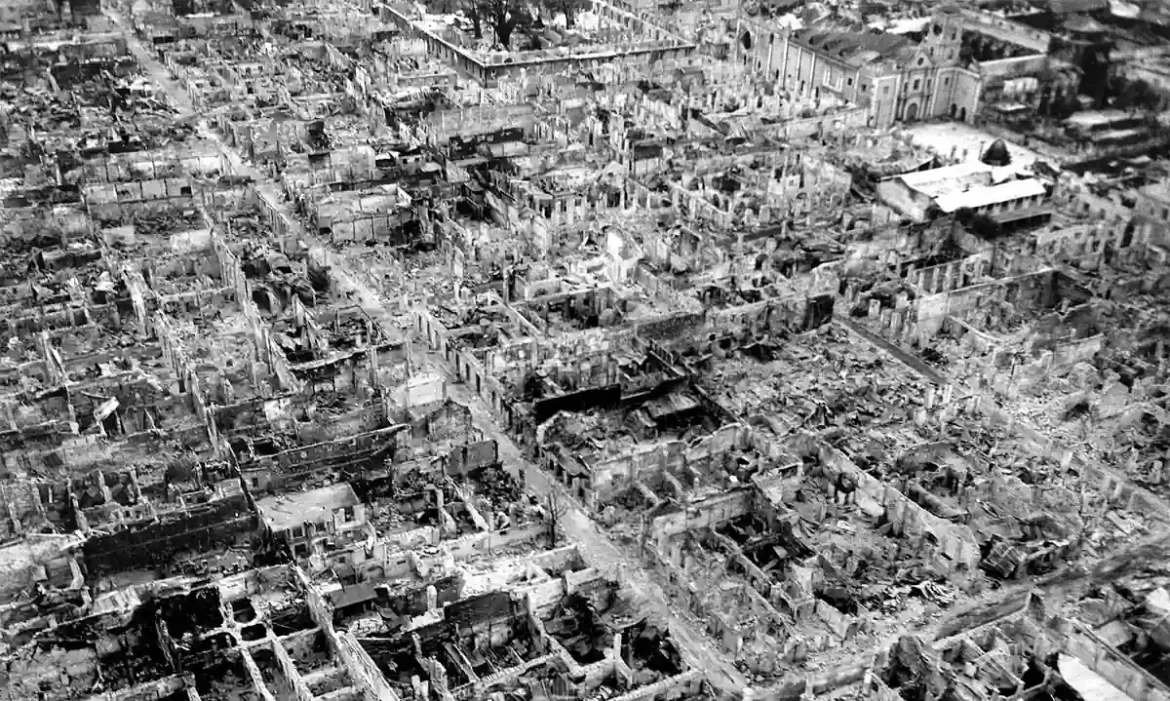
The Rebirth: Restoration and Preservation
After the war, several laws were passed to restore Intramuros to its former glory. Particularly, Republic Act 597 declared Fort Santiago (a citadel inside Intramuros) as a national shrine, with the policy of restoring, reconstructing, and urban planning of the walled city of Manila.
In 1979, Presidential Decree No. 1616 established the Intramuros Administration (IA) to oversee the walled city’s restoration.
Since then, the IA has rebuilt or restored the five surviving gates—Isabel II, Parian, Real, Santa Lucía, and Postigo—while major landmarks like Manila Cathedral (rebuilt in 1958) and the Ayuntamiento de Manila (2014)[4] have also risen again.
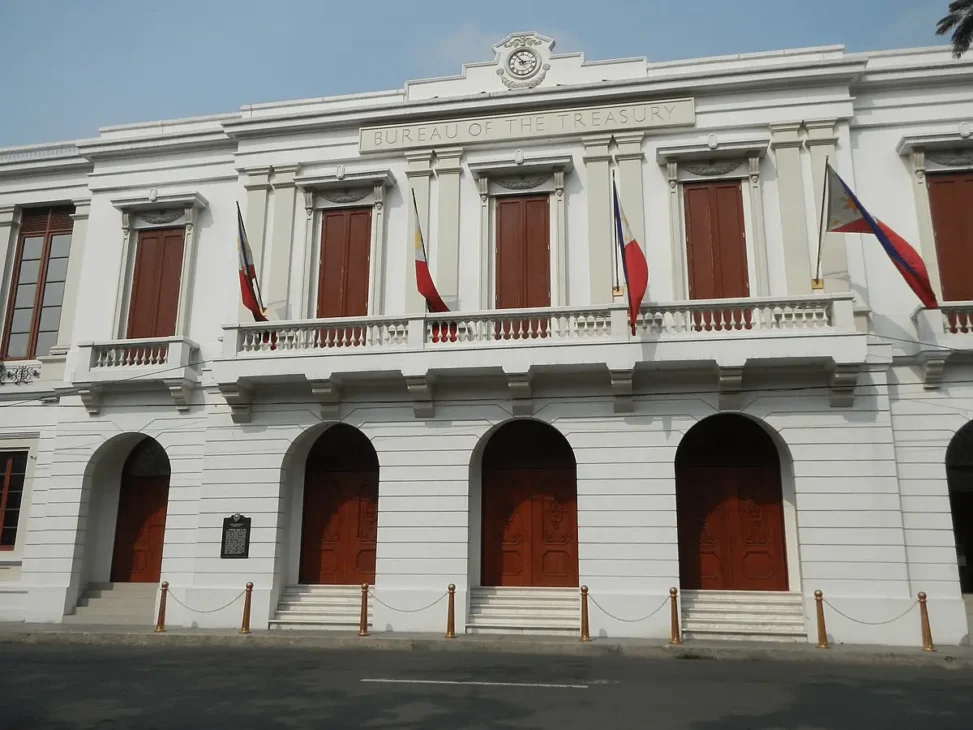
San Agustin Church, miraculously spared during the war, is now a UNESCO World Heritage Site. It’s one of the Philippines’ four Baroque churches, famed for its all-stone structure, intricately carved bas-reliefs, and massive wooden doors.[5] Beyond attending mass, tourists can join guided tours and visit the crypts beneath the convent, where notable figures like Governor-General de Legazpi and painter Juan Luna are laid to rest.

The goal was not only to rebuild structures but to revive identity. Through these efforts, Intramuros rose again as a symbol of survival and cultural pride.
The Thriving: Must-See Tourist Attractions
Today, Intramuros stands as one of the Philippines’ most famous tourist destinations. Locals and foreign visitors alike walk its cobbled streets to get a glimpse of history. Here are some of the places you can explore:
Manila Cathedral
The Manila Cathedral has been rebuilt multiple times since the 1500s, with its current structure completed in 1958 after World War II left it in ruins. Serving as the seat of the Archdiocese of Manila,[6] it is not only an architectural landmark but also a living monument to the city’s resilience.
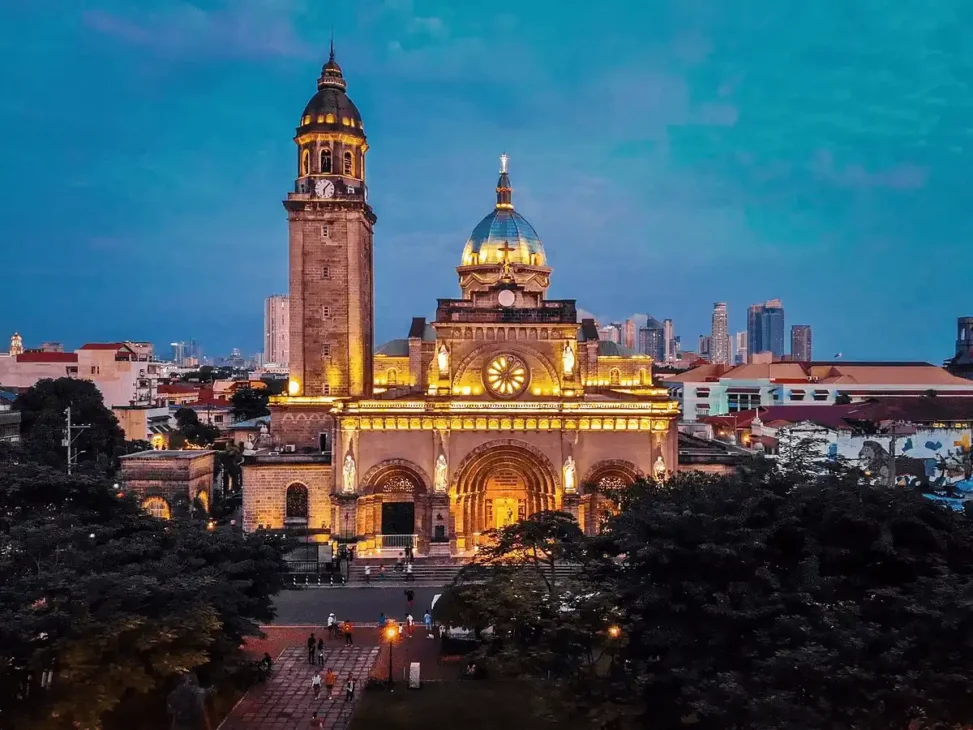
Its neo-Romanesque design, bronze doors, and stained-glass windows make it one of the most photographed sites in Intramuros.
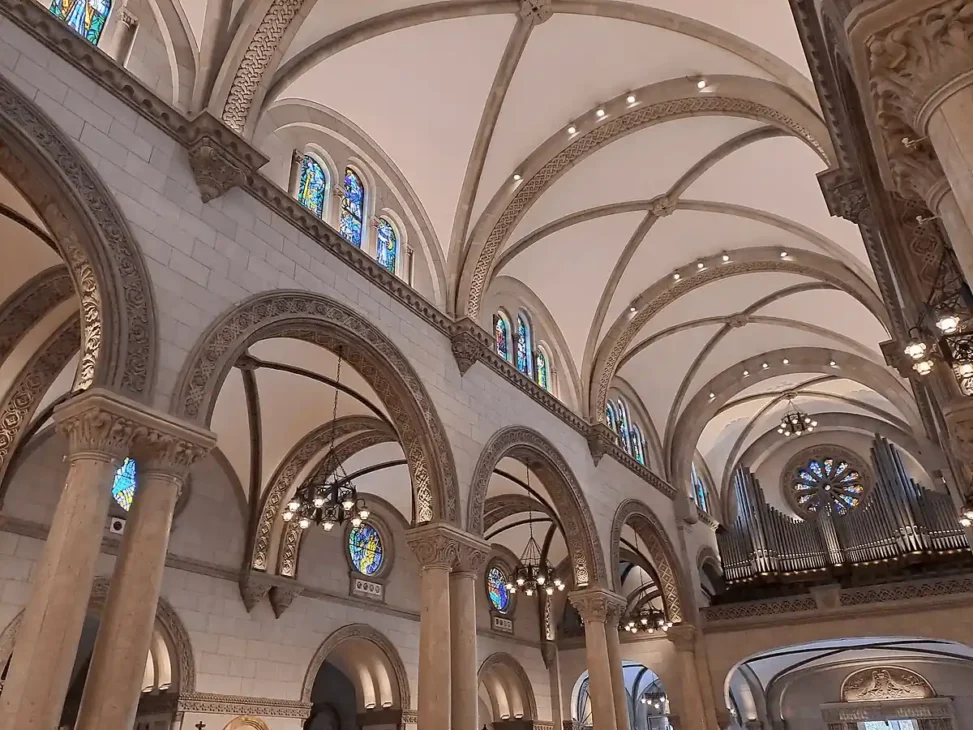
For visitors, the cathedral is open daily, welcoming both tourists and worshippers. Inside, you can admire its intricate marble floors, sculptures, and chapels dedicated to different saints. Masses are held regularly as well. Entrance is free, though donations are encouraged to support the church’s upkeep.
Fort Santiago
Built in 1571, Fort Santiago served as a military defense fortress. Through the centuries, it became a symbol of Spanish rule and was later used as a prison by Japanese forces during World War II. Perhaps its most significant claim to fame is its association with José Rizal, the Philippine national hero, who was imprisoned here before his execution.
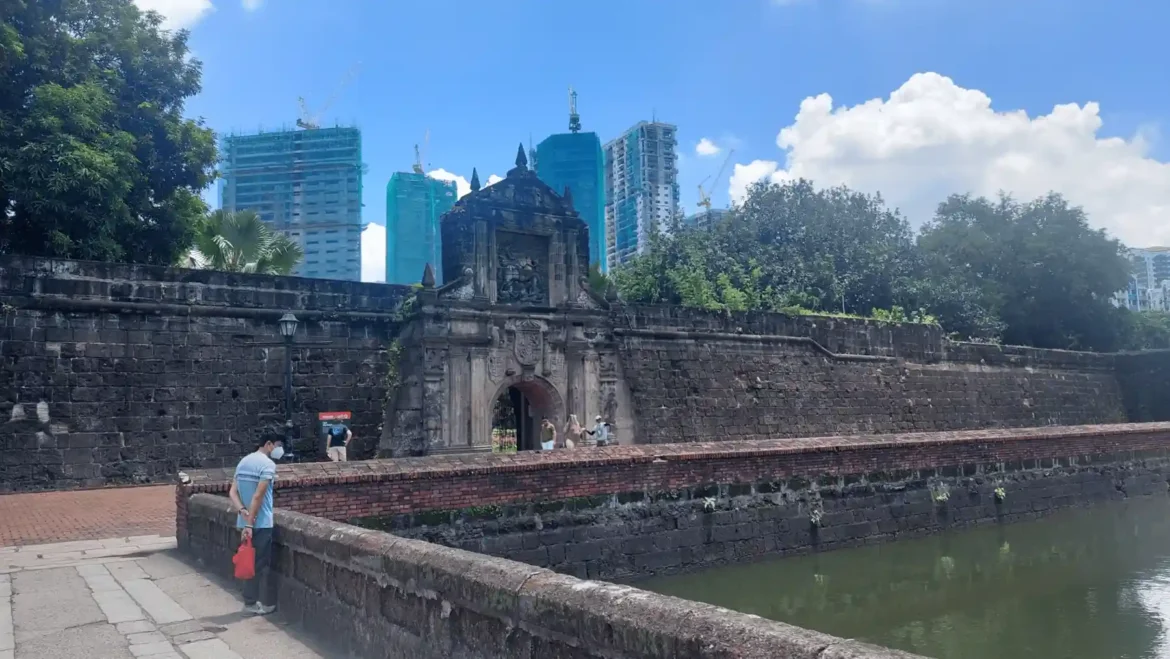
Today, Fort Santiago is one of the most visited sites inside Intramuros. Visitors can walk through its massive arched gate, explore barracks ruins, and follow Rizal’s final footsteps marked in bronze on the ground.
The Rizal Shrine Museum (Museo ni Rizal) inside displays manuscripts, personal belongings, and dioramas depicting his life. The site also features landscaped gardens, plazas, and scenic riverside views of the Pasig. Entrance fees are around ₱75 (about 1.5$) for adults and ₱50 (about 1$) for students, children, and senior citizens.
If you can’t visit soon or just want a preview, here’s a virtual tour of Fort Santiago:
Museo de Intramuros
The Museo de Intramuros is housed in the restored San Ignacio Church, which was heavily damaged during World War II and rebuilt to preserve its historical significance. Opened in 2019, the museum was established by the Intramuros Administration to safeguard and showcase the rich religious and cultural heritage of the Philippines.
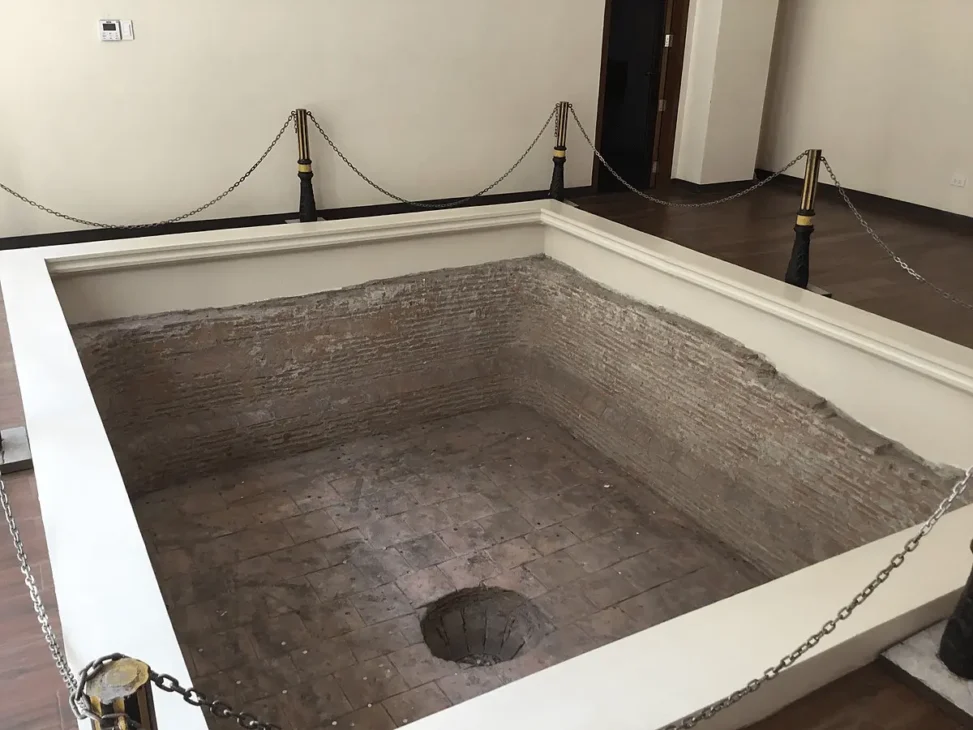
Inside, visitors will find centuries-old religious images, altarpieces, ecclesiastical art, and artifacts from the Spanish colonial period. It’s less crowded compared to other sites, making it ideal for those who want a quieter, more reflective experience. Best of all, the entrance is free.
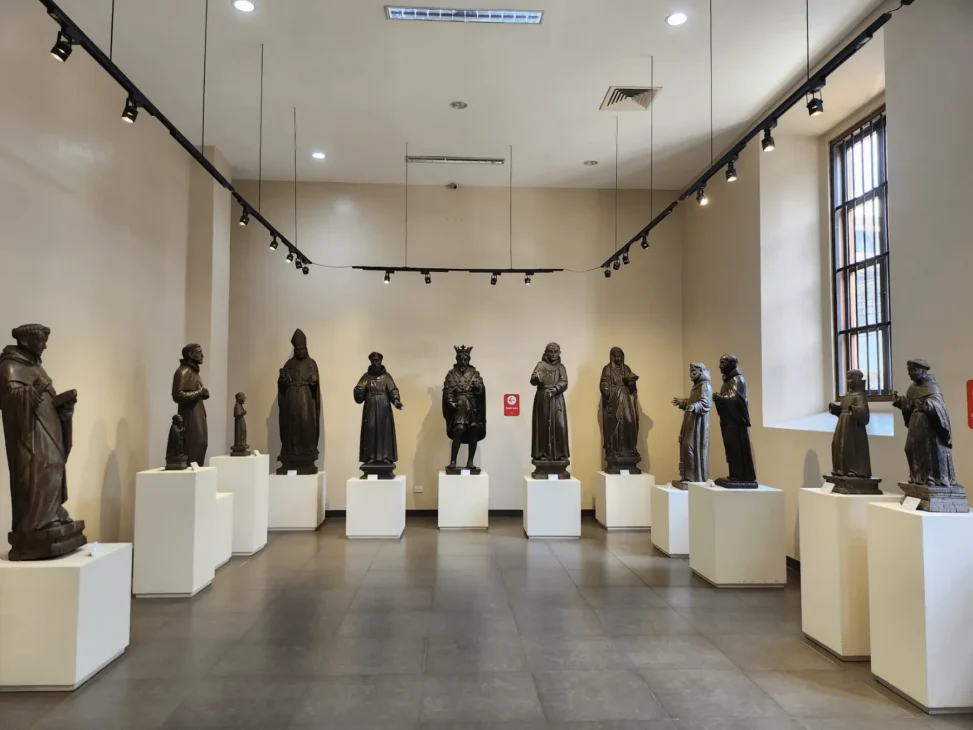
Intramuros: The Heart of Manila’s History
One can’t deny Intramuros’ integral part in Philippine history. From its Spanish golden age to its devastation in WWII, and finally, to its revival as a cultural hub, the walled city continues to stand tall amidst the hustle and bustle of imperial Manila.
If you ever find yourself in the Philippines, make sure to add Intramuros to your itinerary. Walk its walls. And be part of a history that continues to shape modern Manila. I promise, you won’t regret it.
Frequently Asked Questions (FAQs)
What is Intramuros famous for?
Intramuros is best known for its centuries-old stone walls and Spanish colonial architecture. It served as the seat of government and religion during Spanish rule, making it the historic heart of Manila. Today, it’s a popular destination for history tours, museums, and cultural experiences.
What time does Intramuros open?
Intramuros itself is a public district that remains open 24/7. However, specific attractions like Fort Santiago, Museo de Intramuros, and San Agustin Church have their own operating hours, generally from morning to late afternoon.
Are Fort Santiago and Intramuros the same?
No, Fort Santiago is a citadel located within Intramuros. While Intramuros refers to the entire walled city, Fort Santiago is one of its most important landmarks, famous for its role in Philippine history, particularly as the prison of national hero José Rizal.
References:
[1] Welcome to Fort Santiago! | Intramuros Administration
[2] The History of Intramuros, the Walled City, Manila
[3] Timeline of the Philippines in World War 2 – Pacific Atrocities Education
[4] Ayuntamiento de Manila: On its 4th incarnation since 1571 – CNN Philippines

